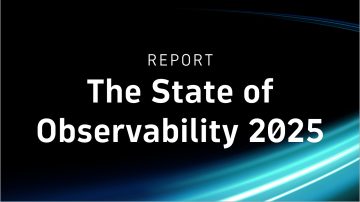
What is LLM observability?
LLM observability is the practice of collecting, analyzing, and correlating telemetry across a tech stack to understand how AI systems behave in every environment, including production. It enables real-time visibility into large language models (LLMs), AI agents, orchestration layers, and their downstream impact on applications and infrastructure.
LLM observability delivers actionable insights that enable developers, site reliability engineers (SREs), and platform teams to debug, optimize, and improve AI-powered services, ensuring they stay reliable, performant, cost-efficient, and meet quality standards.
Full-stack observability for AI systems is especially critical when working with managed AI platforms like OpenAI, Anthropic, Gemini (Google Cloud), Amazon Bedrock, Azure AI Foundry, and Vertex AI, where model execution happens externally and opaquely, yet directly affects business-critical workflows.
The need for LLM observability
As LLMs have evolved, many use cases have emerged, with implementations including chatbots, data analysis, data extraction, code creation, and content creation. These AI-powered models offer benefits such as speed, scope, and scale. LLMs can quickly handle complex queries using a variety of data types from multiple data sources.
However, synthesizing more data faster doesn't always equate to better results. While the models may function perfectly, if the data sources aren't accurate, the outputs will be inaccurate, as well. Furthermore, if the data is valid, but processes are flawed, the results will be unreliable. Therefore, observability is necessary to ensure all aspects of LLM operation are correct and consistent.
Further reading: AI and LLM observability with Dynatrace
Key components of LLM observability
LLM observability has three key components:
Output evaluation
Teams must regularly evaluate outputs for accuracy and reliability. Because many organizations use third-party LLMs, teams often use a separate evaluation LLM that’s purpose-built for this function.
Prompt analysis
Poorly constructed prompts commonly cause low-quality results. Therefore, LLM observability regularly analyzes prompts to determine if queries are producing desired results, and if better prompt templates can improve them.
Retrieval improvement
Data search and retrieval are critical for effective output. Here, the observability solution considers the retrieved data's context and accuracy, and it looks for ways to improve this process.
LLM observability FAQs
What are the business benefits of improving LLM observability?
LLM observability helps businesses ensure accuracy and reliability in AI applications. To prevent costly errors, it enables output evaluation through purpose-built systems. Organizations can optimize performance and reduce expenses by analyzing prompts and improving data retrieval processes. These capabilities maintain high-quality customer experiences and protect brand reputation, which directly affects business outcomes.
How can organizations integrate LLM observability into existing workflows?
Organizations should start by implementing output evaluation tools that work alongside their current LLM implementations. Teams can create prompt analysis processes to regularly review and refine their prompt templates. Teams should audit and enhance data retrieval mechanisms to ensure contextual accuracy. Integration should be gradual, with priority given to applications for which accuracy and reliability are most critical.
How does LLM observability help to maintain AI safety and compliance?
LLM observability helps identify potentially harmful outputs before they reach users. It enables teams to detect prompt injection attacks that could manipulate systems into generating inappropriate content. Regular analysis helps maintain compliance with internal policies and external regulations. Comprehensive observability provides documentation and audit trails that demonstrate responsible AI use to stakeholders and regulators.
Keep reading
 ReportLLM observability is critical to managing modern AI workloads
ReportLLM observability is critical to managing modern AI workloads REPORTThe State of Observability
REPORTThe State of Observability
Report 2025
See how leading enterprises are using real-time, contextual data to fuel trustworthy AI and drive transformation. BlogDelivering agentic AI reliability: Why AI Observability is imperative
BlogDelivering agentic AI reliability: Why AI Observability is imperative